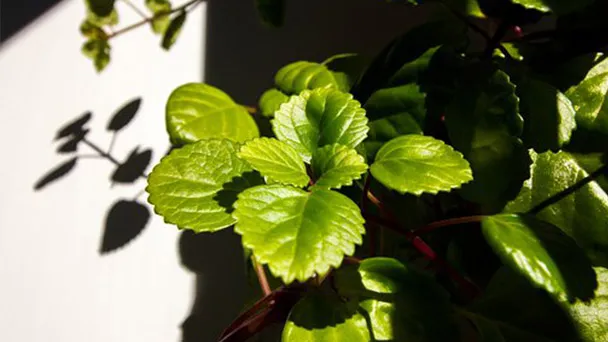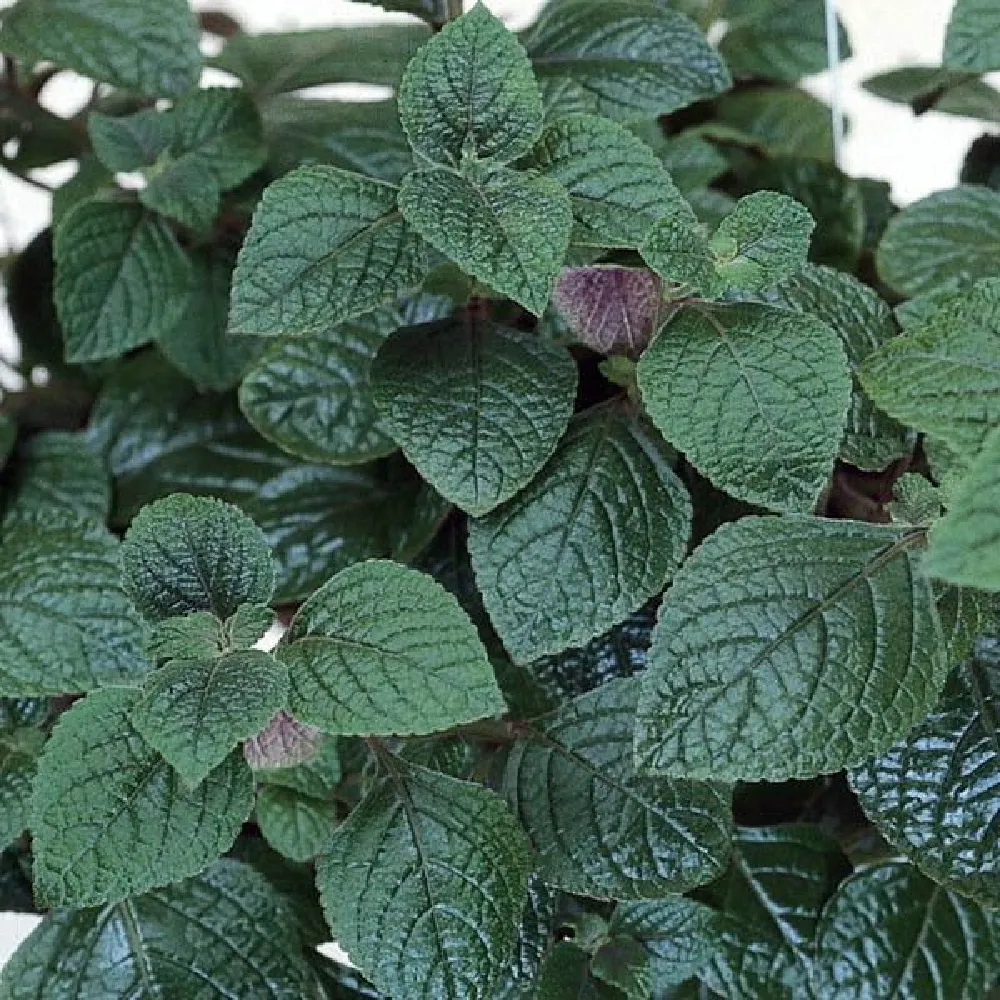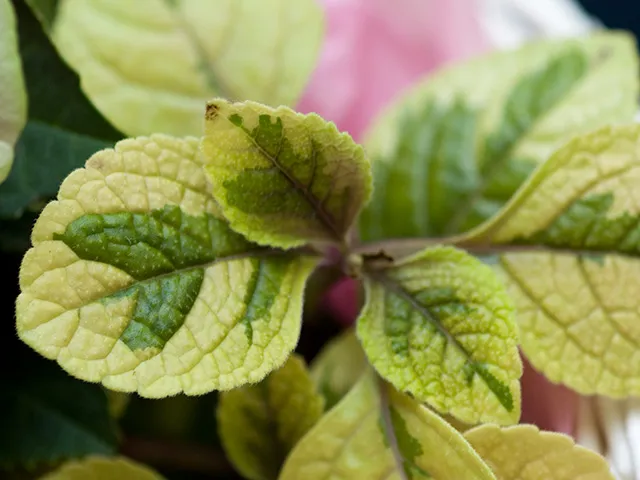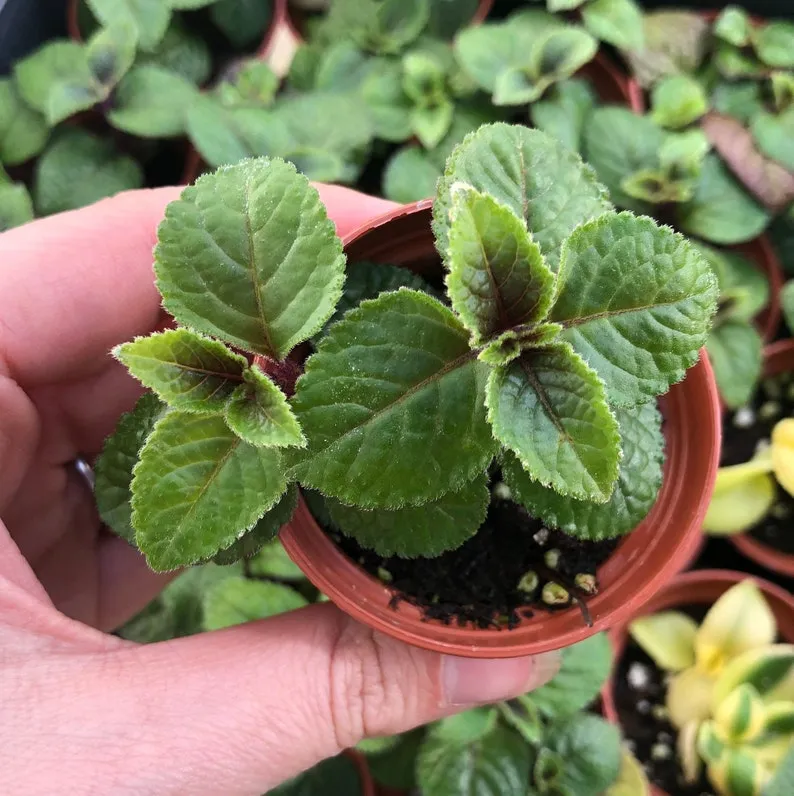How to Grow and Care for Swedish Ivy (Plectranthus Verticillatus) Indoors?
Written by Ivy
Jan 28 2023

Swedish Ivy (Plectranthus Verticillatus) is a very unique herb. Swedish Ivy is very suitable to be cultivated as a hanging basin plant indoors or on the table. Swedish Ivy's branches grow down, which is a very unique foliage plant. The leaves of Swedish Ivy are relatively round, and the veins on the leaves are slightly propagated, which can maintain the state of green all year round. Swedish Ivy likes warm and humid environment. Swedish Ivy likes bright light. It's best to have 3 ~ 4 hours of direct sunlight every day, but it should be properly shaded around noon in summer. We can spray water around Swedish ivy to keep the air moist. If the conditions are appropriate, it generally grows well.

If we apply too much fertilizer to Swedish ivy, the root will rot, so we'd better choose not to apply fertilizer. Moreover, in summer, Swedish ivy has reached the mature season, so we can reduce fertilization. Every other month and a half, fertilization can ensure the nutrient absorption of plants.
After the weather warms up in spring, a large number of new shoots are pulled out. At this time, we can remove some unwanted side buds. After some branches grow to an appropriate length, the top buds are removed to inhibit their growth. If the temperature is high in summer, it is not suitable to prune. When the temperature exceeds 30 ℃, Swedish Ivy will enter the dormancy period. At this time, the wound is not easy to heal. In addition, it is easy to get sick due to high temperature and humidity.

Swedish Ivy is the most effective indoors plant to absorb formaldehyde at present. The leaves of Swedish Ivy per square meter can absorb 1.48 mg of formaldehyde. The total leaf area of two pots of adult Swedish Ivy is about 0.78 square meters. At the same time, Swedish Ivy can also absorb benzene, a toxic and harmful substance, and 90% of indoor benzene can be absorbed under 24-hour light conditions. It is speculated that a room of 10 square meters only needs 2-3 pots of Swedish Ivy to purify the air, and it can also adsorb particulate dust.
Swedish Ivy Quick InfoWhen to Plant Swedish IvyWhen does Swedish Ivy Bloom & HarvestSwedish Ivy Care in DetailSwedish Ivy WateringSwedish Ivy SoilSwedish Ivy LightSwedish Ivy TemperatureSwedish Ivy HumiditySwedish Ivy FertilizerSwedish Ivy PruningSwedish Ivy RepottingSwedish Ivy Pest & Disease ControlBlightBotrytis cinereaLeaf spotScaleSwedish Ivy PropagationSwedish Ivy Propagation from CuttingSwedish Ivy Propagation from SeedSwedish Ivy Benefits
Swedish Ivy Quick Info
| Botanical/Scientific Name | Plectranthus Verticillatus |
| Common Name | Swedish Ivy |
| Uses | Easy-to-grow houseplant |
| Origin | South Africa |
| Light Care | Bright light |
| Soil Care | Well-draining |
| Temperature Care | Between 60 and 75 degrees F |
| Humidity Care | With high humidity |
| Watering | Water once a week |
| Pruning Care | Require pruning once a year |
| Fertilizer Care | Feed once every two weeks |
| Propagation | Through cuttings |
| Toxic | Non-toxic to pets |
| Flower Color | White or light purple blooms |

When to Plant Swedish Ivy
Planting Swedish Ivy is best in spring, and the specific month is between February and May. At this time, the temperature has begun to rise, and the seeds can germinate better after planting. If the climate in some areas has been stable above 10 degrees, Swedish Ivy can be planted all the year round. In cold areas, we have to postpone planting until after April, otherwise the temperature is unstable and too low will affect the budding of Swedish ivy and reduce the budding rate.When does Swedish Ivy Bloom & Harvest
Swedish Ivy is an evergreen vine that can blossom. Swedish Ivy usually blooms in autumn and has a long flowering period. Of course, if you are lucky, the flowering period will last until spring. When Swedish Ivy blooms, each inflorescence has a flower. The flower is small, white green or light yellow, with a faint fragrance. If there is a basin of Swedish ivy that has been kept for several years, the flowers are distributed from top to bottom, ranging from 5 to 40.Swedish Ivy Care in Detail
Swedish Ivy Watering
For plants like Swedish ivy, there is no fixed time for watering. Usually, we can water according to the changes of seasons to ensure that the pot soil is dry and wet at all times. When the soil in the flower pot becomes dry, we can water it to ensure that the soil moisture is uniform and thorough, but we must pay attention to avoid ponding.Swedish Ivy Soil
Swedish Ivy does not have strict requirements for soil. As long as Huayou ensure good drainage, you can also add some humus rich soil, such as rotten leaf soil or compost soil, so as to ensure that the soil has appropriate fertility and make Swedish Ivy grow more vigorously. In the spring and summer growing season, we can add a little fertilizer and water every two months to make the plants grow stronger and the leaves more vigorous.Swedish Ivy Light
Although Swedish Ivy can tolerate shade, it has weak phenomena such as plant overgrowth, leaf thinning and discoloration when it is in a shaded environment for a long time. If we avoid the strong light at noon in summer, we can give 2-3 hours of soft oblique light every morning and evening, and the growth will be significantly enhanced. The leaves of Swedish Ivy will increase and thicken, and the leaf color is light green and shiny.Swedish Ivy Temperature
Swedish Ivy likes warmth, and the suitable temperature for growth is 20 ℃ - 25 ℃. He is afraid of heat and is not resistant to cold. Therefore, when placed indoors for maintenance, pay attention to ventilation and cooling in summer. In winter, the room temperature should be kept above 10 ℃ and at least not lower than 5 ℃.Swedish Ivy Humidity
In the spring and summer growing season, we must keep the soil moist, and spray the water around it regularly so that we can maintain a higher air humidity and grow more vigorously. Swedish ivy is a shade tolerant herb. It can be propagated in a semi cloudy indoor environment. We can give some scattered light every day to make it bloom lavender flowers.Swedish Ivy Fertilizer
Swedish Ivy needs a lot of fertilizer indoors, especially in the period of vigorous growth. If you want to propagate Ivy well, you must apply fertilizer frequently. Therefore, it is best to apply fertilizer every half a month, which can be fully absorbed by plants. However, you can choose not to apply fertilizer in summer or winter.If we apply too much fertilizer to Swedish ivy, the root will rot, so we'd better choose not to apply fertilizer. Moreover, in summer, Swedish ivy has reached the mature season, so we can reduce fertilization. Every other month and a half, fertilization can ensure the nutrient absorption of plants.
Swedish Ivy Pruning
Swedish Ivy can be pruned at will indoors. Except that the temperature exceeds 30 ℃ in summer, it can be trimmed in other seasons. If it is outdoors, it is best to trim in spring. Swedish ivy can be pruned in early spring. After pruning, a large number of side branches can germinate. Some branches affecting tree shape can be removed in this season.After the weather warms up in spring, a large number of new shoots are pulled out. At this time, we can remove some unwanted side buds. After some branches grow to an appropriate length, the top buds are removed to inhibit their growth. If the temperature is high in summer, it is not suitable to prune. When the temperature exceeds 30 ℃, Swedish Ivy will enter the dormancy period. At this time, the wound is not easy to heal. In addition, it is easy to get sick due to high temperature and humidity.

Swedish Ivy Repotting
When we give Swedish Ivy repotting indoors, we should take off the basin first, and pay attention not to hurt the new root. After that, the root system shall be trimmed in time to cut off dead roots, rotten roots and old roots to reduce water consumption. We should also reconfigure new soil, mix it with river sand, garden soil and rotten leaf soil, and pay attention to disinfection before use. Directly dig the pit into the soil when loading the basin, fill and compact the surrounding soil in time, and pour water. After Swedish Ivy repotting is completed, we need to sun the plants first and put them in a cool place. They can resume growth in about a week.Swedish Ivy Pest & Disease Control
Blight
- Symptom: The Swedish Ivy disease will cause the whole or most of the leaves to turn brown and rot, or the base of the stem and vine and the base of the tender node are dark green water stains. The plant gradually softens and shrinks, and the branches and leaves above the diseased part wither. The Swedish Ivy disease is often caused by bacteria in the soil, or high air humidity and muggy environment. Once it occurs, it will spread rapidly.
- Control method: After we found the Swedish Ivy diseased plant, we should remove it in time and properly control the watering. Select disease-free plants when planting, and use the soil after disinfection. Maintenance shall be strengthened at ordinary times, and attention shall be paid to ventilation and light transmission. When it rains, the rain shall be blocked in time to avoid basin soil wetting and moisture retention. We can spray or water 25% metalaxyl wettable powder 800 times liquid or 58% metalaxyl. Manganese zinc wettable powder 600 times liquid at the early stage of the disease. There should be many choices. Just buy it in the market.
Botrytis cinerea
- Symptom: The Swedish Ivy disease will cause water stained brown or black disease spots on the leaf edges. In severe cases, the disease spots can account for most or all of the leaves, and gray mold layer will appear when it is wet.
- Control method: We should use disease-free new soil for cultivation, control watering, and do not apply too much nitrogen fertilizer. Timely remove the diseased leaves and burn them. When the disease occurs, spray 500 times of 75% chlorothalonil. Once every 10 days, 2 ~ 3 times in a row.
Leaf spot
- Symptom: At the initial stage of symptoms of the Swedish Ivy disease, only small round dark spots with oil like halos appear on the leaf surface. After expansion, it is black, some become polygonal, and ulcer spots occasionally appear on the petiole. Leaf spot disease is serious, highly infectious, easy to relapse and difficult to cure.
- Control method: When you buy Swedish ivy, you must identify the store owner. Don't buy back a pot of sick plants. You can't keep them alive no matter how to remedy them. In the early stage of the disease, we can spray 3000 times of streptomycin sulfate, 600 times of 12% green emulsion copper emulsion and 500 times of 20% ronk suspension.
Scale
- Symptom: The symptoms of the Swedish Ivy disease are far from obvious. There will be many small white spots on the plant, which will affect the beauty. However, in the later stage, the scale insects will dominate the leaves, causing the leaves to turn yellow and the plant to wilt. In serious cases, it will lead to the death of the whole Swedish ivy. Scale insects leave wounds on leaves and are easy to be infected by bacteria, causing diseases.
- Control method: In the early stage, there are fewer pests, so we can scrape them manually. If a large area of disease is found in the later stage, it can be sprayed with 40% Omethoate EC Jing 800 times.
Swedish Ivy Propagation

Swedish Ivy Propagation from Cutting
As for Swedish Ivy propagation from cutting indoors, we can cut a branch with a length of about 10 cm from the mother plant of Swedish Ivy as cuttings, and then cut off the leaves at the bottom of the branch, leaving only two or three leaves at the top. Secondly, put the branches in a cool place to dry, and apply rooting powder on the incision. Finally, prepare a loose soil with good air permeability, and then insert the Swedish Ivy branches into the soil to give it a certain water demand and grow in a cool and ventilated place.Swedish Ivy Propagation from Seed
Swedish Ivy propagation from seed can be carried out after the weather is stable in spring. We sprinkle the seeds of Swedish ivy on the warm and humid soil surface, and then cover it with a layer of 0.5-1cm thick thin soil. Pour water once, and cover a layer of membrane for thermal insulation, waiting for budding.Swedish Ivy Benefits
Swedish ivy has a variety of leaf colors and shapes. It is evergreen all the year round. It is a beautiful climbing plant and can be used as a vertical greening for scaffolding or walls. It is also suitable for indoor potted culture. It is also a very good indoor foliage plant. Swedish Ivy can be used as potted plants, hanging baskets, totems, plastic plants, etc. Swedish ivy is also the configuration material for cut flowers. In addition, it is a good ground cover material when planted with other plants. (Read More: Is Swedish Ivy Toxic to Cats)Swedish Ivy is the most effective indoors plant to absorb formaldehyde at present. The leaves of Swedish Ivy per square meter can absorb 1.48 mg of formaldehyde. The total leaf area of two pots of adult Swedish Ivy is about 0.78 square meters. At the same time, Swedish Ivy can also absorb benzene, a toxic and harmful substance, and 90% of indoor benzene can be absorbed under 24-hour light conditions. It is speculated that a room of 10 square meters only needs 2-3 pots of Swedish Ivy to purify the air, and it can also adsorb particulate dust.
Latest Updated
- Benefits of Bugleweed - 7 Science-backed Health Benefits
- Bugleweed Dangers & Side Effects - Is It Poisonous?
- How to Plant Evergreen Trees - What You Should Know
- When to Plant Evergreens - Grow Guide for Evergreen Trees
- 12 Wonderful Evergreen Shrubs for Your Garden
- 12 Popular Evergreen Plants with Pictures for Beginners
- When And How To Prune A Lilac Bush Like a Pro
- How to Grow & Care for Lilac Vine (Hardenbergia Violacea)
- Japanese Lilac Tree (Syringa Reticulata) Care & Propagation Guide
- Shumard Oak Pros and Cons - What to Know
Popular Articles
- Winter maintenance of Antirrhinum Majus
- How to Grow Terminalia Mantaly Tree
- How to Grow and Care for Crossostephium Chinense
- How to grow Antirrhinum Majus in spring
- Peristeria Elata (Dove Orchid) Profile: Info & Care Guide
- Underwatered Snake Plant (Sansevieria Trifasciata) - Signs And How To Fix
- How to Care for Brazilian Jasmine Plant (Mandevilla Sanderi)
- How to Grow & Care for Graptopetalum Purple Delight in Summer
- Rosa Chinensis (China Rose): Plant Growing & Care Tips
- How to Care for Baby Sun Rose (Aptenia Cordifolia)